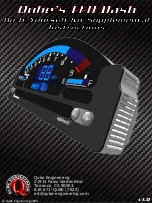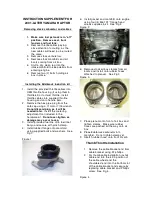
GETTING TO KNO
W
YOU
R VEHICLE
20
NOTE:
Do not tamper with the Engine Immobilizer
system. Any modifications or alterations
could cause the protection function to be
deactivated.
The Engine Immobilizer system is not
compatible with certain aftermarket remote
starting systems. The use of these devices
could cause problems when starting, as well
as the deactivation of the protection
function.
All keys provided with the vehicle have been
programmed in accordance with the elec
-
tronics on the vehicle itself.
Each key has its own code which must be
stored by the system's control unit. Contact
an authorized dealer to have new keys (up
to eight) stored with a code.
SECURITY ALARM SYSTEM — IF
EQUIPPED
Alarm Activation — If Equipped
The vehicle security alarm monitors the
vehicle doors and ignition for unauthorized
operation. When the vehicle security alarm is
activated, interior switches for door locks are
disabled. The system provides both audible
and visible signals.
While armed, the alarm will sound in the
following scenarios:
Opening of doors/hood/liftgate (perimeter
protection)
Operation of ignition with a key which is not
validated
Cutting of the battery cables
Movement inside the passenger compart
-
ment (volumetric protection — if equipped)
Unexpected lifting/tilting of the vehicle
(anti-lift protection — if equipped)
Activation of the alarm triggers the acoustic
warning and the turn signals.
NOTE:
The alarm system is activated by the Engine
Immobilizer system, which is automatically
activated when you get out of the vehicle with
the key fob and lock the doors.
To Arm The Alarm
With the doors, hood, and liftgate closed and
the keyless ignition system placed in the OFF
position, push and release the lock button on
the key fob. The alarm can also be armed by
pushing the Passive Entry door handle button,
located on the exterior door handle. Refer to
"Doors" in this chapter for further information.
When the alarm is armed, the warning lights
on the door handle trim remain on.
Lock/Unlock Switches
The activation of the alarm is preceded by a
self-diagnosis stage: if a fault is detected, the
system emits a further acoustic signal.
If a second acoustic signal is emitted after the
alarm is already armed, wait about four
seconds and disarm the alarm by pushing the
unlock switch. Verify that the doors, hood, and
liftgate are closed correctly. Then, reactivate
the system by pushing the lock switch.
If the alarm emits an acoustic signal even
when the doors, hood, and liftgate are
correctly closed, a fault has occurred in
system operation. In this case, contact an
authorized dealer.
20_GU_OM_EN_USC_t.book Page 20
















































